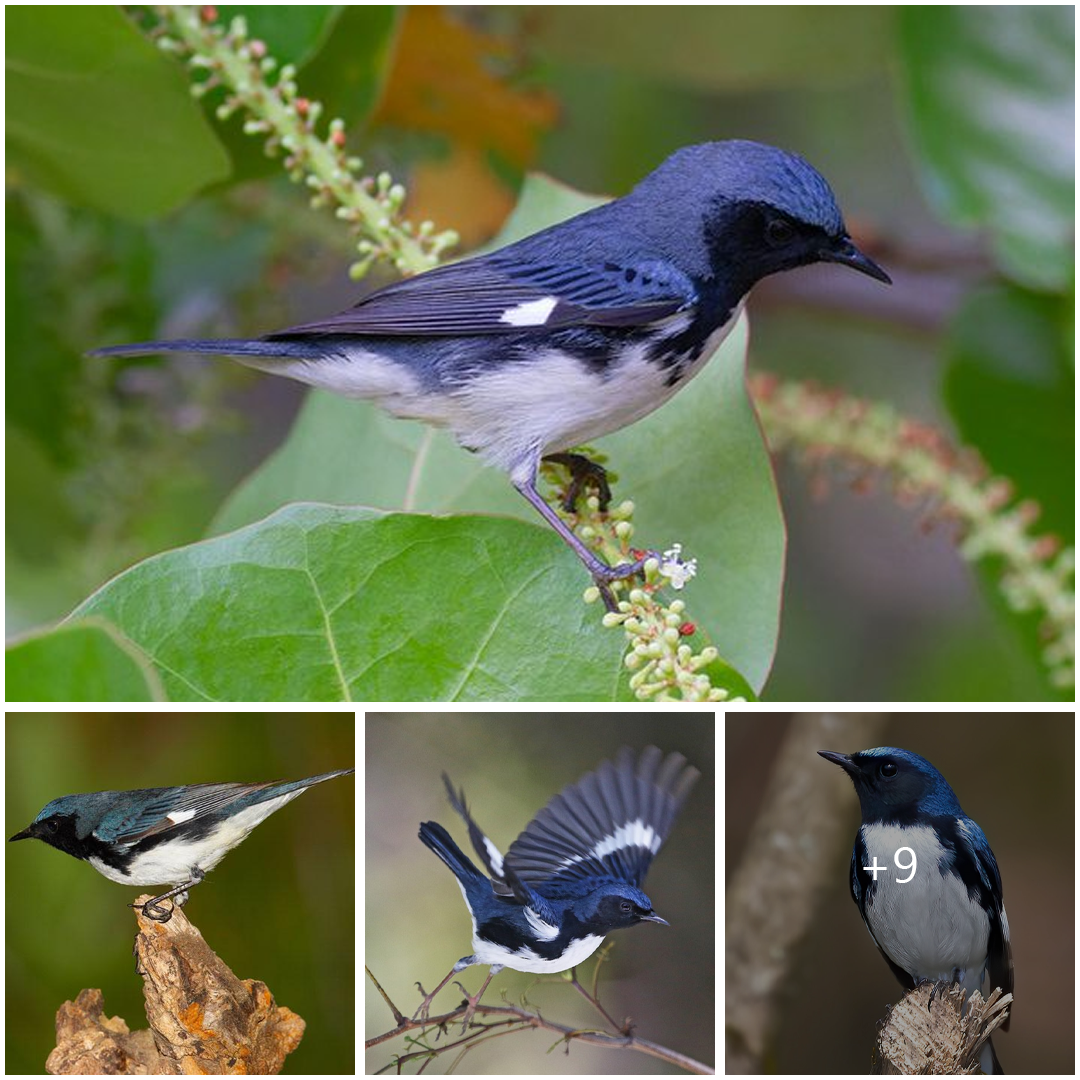
The Allure of the Black-Throated Blue Warbler: A Jewel of North America’s Forests
The black-throated blue warbler (Setophaga caerulescens) stands out as a true gem among North America’s avian treasures, captivating observers with its vibrant plumage and melodious songs. Found amidst the lush foliage of eastern forests, this charismatic warbler enchants birdwatchers and nature enthusiasts with its striking appearance and captivating behavior.
Appearance and Identification: Adorned in hues of blue, black, and white, the black-throated blue warbler boasts a stunning plumage that distinguishes it from its avian counterparts. Male birds feature deep blue upperparts, a contrasting black throat patch, and crisp white underparts, creating a bold and eye-catching appearance. In contrast, females exhibit more subdued tones, with olive-green upperparts and a paler throat patch. Both sexes display distinctive white wing patches and bold white markings on their tail feathers, adding to their overall allure.
Habitat and Range: Black-throated blue warblers are primarily found in the deciduous and mixed forests of eastern North America, where they breed during the summer months. Their range extends from the northeastern United States into southeastern Canada, encompassing a variety of forested habitats, including mature woodlands, wooded swamps, and montane forests. During migration, these warblers undertake long journeys to their wintering grounds in the Caribbean and Central America, where they inhabit a range of tropical and subtropical habitats.
Foraging Behavior: Equipped with slender bills and agile movements, black-throated blue warblers are adept insectivores that forage actively among the foliage of trees and shrubs. They glean insects and spiders from leaves, branches, and bark, using their sharp eyesight and quick reflexes to capture prey with precision. These warblers also supplement their diet with berries and fruit, particularly during the fall migration when insect prey becomes scarce.
Breeding and Nesting: During the breeding season, male black-throated blue warblers establish territories and engage in spirited courtship displays to attract mates. Females construct cup-shaped nests in dense vegetation, typically situated close to the ground or in shrubs. Nests are constructed from grasses, mosses, and plant fibers, providing a secure environment for incubating eggs and raising young chicks. After hatching, both parents participate in feeding and caring for the nestlings until they fledge and become independent.
Conservation Status: While the black-throated blue warbler is currently listed as a species of least concern by the International Union for Conservation of Nature (IUCN), it faces threats from habitat loss, climate change, and human disturbance. Deforestation, fragmentation of forest habitats, and pesticide use pose significant challenges to the bird’s long-term survival. Conservation efforts focused on preserving and restoring forest ecosystems are essential for safeguarding this iconic species and ensuring its continued presence in North America’s forests.
In conclusion, the black-throated blue warbler stands as a symbol of beauty and resilience within North America’s forests, enchanting observers with its vibrant plumage and melodious songs. As a beloved resident of eastern woodlands, this charismatic warbler reminds us of the importance of protecting and preserving the diverse ecosystems that sustain it and countless other species for generations to come.





